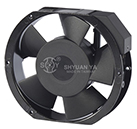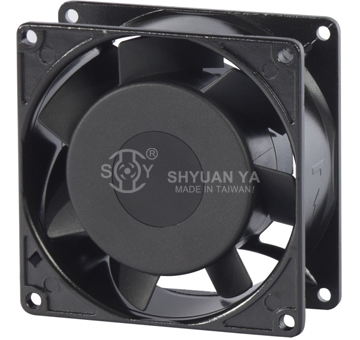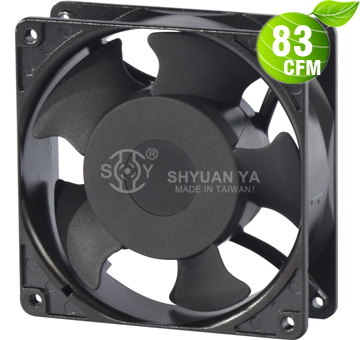5 Key Causes of AC Fan Motor Failures and Ways to Avoid Recurrence
AC fan motors play a pivotal role in the efficient functioning of air conditioning systems. However, despite their durability, they are prone to failures if not properly maintained or subjected to adverse conditions. In this article, we’ll explore the five key causes of AC fan motor failures and provide actionable tips to prevent recurrence, ensuring optimal performance and longevity.
Understanding How AC Fan Motors Work
AC fan motors are integral components in cooling systems, responsible for driving the fan that circulates air over the condenser or evaporator coils. These motors typically operate on alternating current (AC) and utilize electromagnetic principles to rotate the fan blades. The essential components of an AC fan motor include:
• Rotor and Stator: The rotor spins, while the stator generates a magnetic field to induce motion.
• Bearings: These reduce friction and support the rotor’s rotation.
• Windings: Copper or aluminum coils that carry electrical current to create the magnetic field.
• Cooling Mechanism: Built-in systems or natural ventilation to dissipate heat.
Understanding these fundamentals sets the stage for diagnosing and mitigating failures.
Cause 1: Overheating Due to Poor Ventilation
Overheating is a leading cause of motor failure. It occurs when the motor cannot dissipate heat effectively, often due to inadequate ventilation.
Key Factors Behind Overheating:
• Blocked airflow caused by surrounding obstructions or clogged vents.
• Excessive ambient temperature, especially in confined spaces.
• Insufficient motor cooling mechanisms.
Preventive Measures:
• Improve Ventilation: Ensure proper airflow around the motor by removing obstructions and cleaning air passages regularly.
• Use External Cooling Aids: Install external fans or heat sinks for high-demand environments.
• Monitor Ambient Conditions: Avoid placing the motor in sealed or overheated areas.
Cause 2: Electrical Overload and Surges
Electrical issues such as overloads and voltage surges are common culprits behind motor damage.
How Electrical Overload Occurs:
• Power supply inconsistencies, including sudden voltage spikes.
• Operating the motor beyond its rated capacity.
• Faulty wiring or loose electrical connections.
Preventive Measures:
• Install Surge Protectors: Protect the motor from sudden voltage spikes with reliable surge suppressors.
• Use Proper Circuit Breakers: Ensure breakers match the motor’s specifications to prevent overcurrent.
• Regular Inspections: Conduct periodic electrical checks to identify and repair faults in the wiring.
Cause 3: Improper Lubrication and Bearing Issues
Bearings are critical for smooth rotor operation, but they can fail due to inadequate lubrication or incorrect maintenance.
Signs of Bearing Issues:
• Increased noise or vibration during operation.
• Overheating localized around the bearing area.
• Reduced rotational efficiency or motor stalling.
Preventive Measures:
• Apply Appropriate Lubricants: Use manufacturer-recommended lubricants to prevent wear and tear.
• Schedule Routine Maintenance: Inspect and lubricate bearings periodically.
• Avoid Over-Lubrication: Excessive grease can lead to overheating and contamination.
Cause 4: Dust and Debris Accumulation
Dust and debris pose a significant threat to AC fan motors by impairing performance and increasing wear.
Impact of Dust Accumulation:
• Clogged cooling vents, leading to overheating.
• Abrasion of internal components, reducing efficiency.
• Increased strain on the motor due to obstructed airflow.
Preventive Measures:
• Regular Cleaning: Clean the motor and surrounding components using compressed air or a vacuum.
• Install Filters: Use high-quality filters to minimize debris entry.
• Enclose the Motor: If possible, house the motor in a protective enclosure to reduce dust exposure.
Cause 5: High Humidity Leading to Corrosion
Humidity is particularly detrimental to AC fan motors, as it accelerates corrosion and weakens components.
Consequences of High Humidity:
• Rust formation on motor parts, including bearings and windings.
• Short circuits due to moisture infiltration.
• Degradation of insulation materials.
Preventive Measures:
• Use Anti-Corrosion Coatings: Apply rust-resistant treatments to exposed components.
• Control Humidity Levels: Install dehumidifiers or use air conditioning systems in humid environments.
• Seal the Motor: Opt for motors with moisture-resistant seals for added protection.
Effective Maintenance Tips to Avoid Recurrence
A proactive maintenance strategy can significantly reduce the risk of motor failures. Follow these guidelines:
• Develop a Routine Maintenance Schedule: Include periodic checks for electrical connections, lubrication, and cleanliness.
• Monitor Performance Metrics: Use diagnostic tools to track voltage, current, and temperature fluctuations.
• Replace Worn Components: Timely replacement of bearings, windings, or other aging parts prevents secondary damage.
• Educate Operators: Train personnel on proper motor handling and operating limits.
Conclusion: Ensuring Long-Term Performance of Your AC Fan Motor
By understanding the primary causes of AC fan motor failures and implementing preventive measures, you can significantly extend the lifespan of your equipment. Regular maintenance, coupled with proactive management of environmental and operational conditions, ensures optimal performance and reliability.
For professionals tasked with maintaining these systems, the investment in proper care and advanced diagnostic tools is well worth the effort. Avoiding failures not only saves costs but also ensures uninterrupted operation in critical cooling systems.



.png)


.jpg)





_top.jpg)
_top.jpg)
_top.jpg)


_top.jpg)




_top.jpg)



_top.jpg)
























